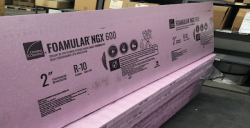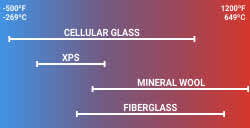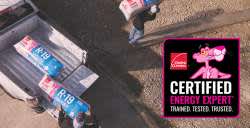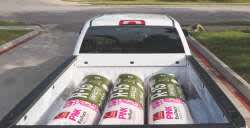Located in southeastern, Wisconsin, U.S.A., Ixonia LNG is a peak sharing energy provider operated by Wisconsin Energy, and one of the state’s largest LNG facilities.
The Owens Corning FOAMGLAS® Cryo Spill™ System installed in the massive impoundment basin at Ixonia LNG helps protects more than the basin’s steel and concrete components. The impermeability of cellular glass works with other components in the L NG impoundment basin to help keep a spill contained.
Beyond the pit’s size—measuring 265 feet-square and 30-feet deep—the basin requires a material that can tolerate cryogenic temperatures. Extreme temperatures used in LNG processes can stress structural materials including concrete and carbon steel. Thermal shock can occur when concrete or carbon steel elements are exposed to cryogenic process materials at temperatures of -260°F.
Project team members constructing the Ixonia LNG facility wanted a solution that would help protect against cracking in the concrete basin that could allow cryogenic contents to escape and contaminate nearby wetlands. As carbon steel begins to lose strength at temperatures below -20°F, the impoundment basin’s carbon steel components required a material that would help maintain carbon steel’s integrity until cryogenic liquid from a spill event was allowed to vaporize.
The Owens Corning FOAMGLAS® Cryo Spill™ System helps protect against concrete cracks while delivering high compressive strength to support load performance. The Ixonia LNG impoundment basin contains 850 cubic meters of FOAMGLAS® cellular glass insulation, enough to cover two American football fields.
Passive strength and jobsite support
The “passivity” of the system means that once it is installed, no mechanism is required to activate the spill protection system to keep the steel at a temperature above -20°F, until any spilled LNG evaporates. The system eliminates the need to add sacrificial concrete, and requires minimal maintenance once installed.
Given the volatile materials used in LNG processes, assessing the fire resistance and wicking potential of materials used in the impoundment basin is critical. The all-glass composition of Owens Corning FOAMGLAS® insulation means it will not wick flammable liquids. The material does not burn, does not contribute to fire spread, and will not produce toxic smoke nor generate flaming droplets.










